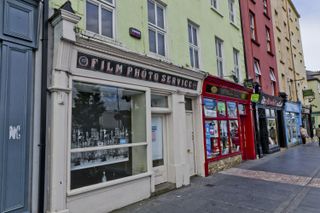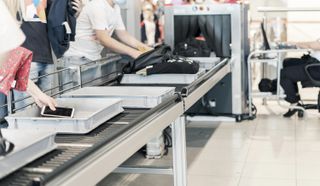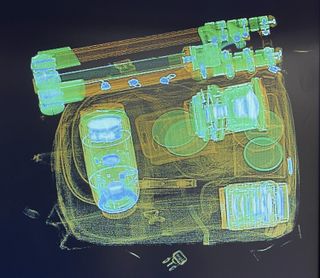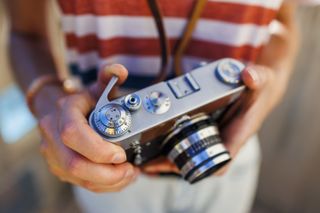Filming is back in vogue, mostly because of social media. The temptation to take an old Olympus Mju II, or one of our best video cameras, a roll of Kodak Gold 200 on your next vacation may be strong, but there are some things to consider.
Until it is fixed and developed, photographic film is affected by light, so we make film in the dark. However, it is also affected by waves that we cannot see, the more obvious and dangerous X-rays. When traveling around the world, your luggage may go through X-ray machines at least twice, on the way out and on the way back, so there are some things to consider when traveling with film.
1. Before you leave

If you’re traveling with a movie, there are some important things you can do before you get to the airport. The first is your choice of film. The harder the film and the higher the ISO level, the more X-ray machines can damage it. Shooting with ISO 100 or 200 film is better than shooting with ISO 400 and above. The higher the ISO sensitivity, the more careful you need to be when shooting, so find the lowest film you’re comfortable shooting with.
I advise you not to load your film in your camera before you leave. Instead, store it in its box or plastic container. Then, label your film in a clear sandwich bag, ‘Invisible Films.’
You can buy special lead film storage bags that will block X-rays, but in the X-ray machine at the airport, this will show up as a large piece of metal and pull you to one side to check in. In this case, it is best to ask for the film to be scanned by hand first.
Finally, make sure your film fits in your bag and not in your purse; Portable X-ray machines are more powerful because of the larger objects that have passed through them. So keep your film with you, not in your check-in suitcase.
2. Buy and make when you don’t have it

The safest way is to prepare your film at your destination. Buying your film at the duty-free shops at the airport may be possible after going through security. With a little research ahead of time, you should be able to find out if a photo store sells film in your area or if you can get Amazon to deliver a few rolls to your hotel. This obviously won’t work if you’re too far away from Earth, but otherwise, it’s worth considering.
To add to this, you can reduce the chance of X-ray fog by making the film while walking. You don’t need to print or scan the film (although that would be a good idea); just ask for the film to be made, and then you can make the film at home. Depending on where you live and where you’re going, you can save money by making films made overseas.
3. At the airport

If you’ve decided to go with your film, then the good news is that most modern X-ray machines produce very low X-rays that shouldn’t damage film below ISO 800, even if it’s low. they pass. Be warned that developing countries, small/existing airports, and high-risk countries may use older or more powerful X-ray scanners.
Again, carry your film in your hand bag, not your luggage, as these may have high-powered scanners that can jam your film in one scan.
I recently traveled from London Gatwick to Palma, Spain, with ISO 200 film in my bag which went through the x-ray machine twice and was not damaged. However, if you are not ready to take any risk, you can request to scan your film manually.
If you want to have the film screened manually, arrive with plenty of time to reserve. Approach a member of the security team politely and explain that you have unexposed film and would like it reviewed manually.

If the film is professional, then having documentation proving that you are a professional photographer or have experience related to the film or project would be helpful. Even a letter about the film, how it should be done, and why it is important can help. And don’t forget to have one in the language of the country you live in. Google Translate or AI can help you make this letter possible.
Keeping it in a clear, labeled plastic bag can save time. If it’s in a box and in its own plastic bottle, the security guard may ask you to open it for inspection. They will shake the video director, canister, or both to look for explosives or drugs. They can also shake or shake the can of film to see if everything is as it appears.
Security must be trained to view the film effectively without damaging or exposing it. As with all things related to airline security, to make life easier for everyone, be courteous to security personnel. They have a job to do and they have the right to refuse to scan manually and just put your film through the scanner.
4. Heat and humidity

Just as it is important to protect your camera and lenses from heat and humidity, it is also important to protect your film. Modern consumer films are stable, but it is always better to avoid sudden changes in temperature, which can cause moisture inside the film. The best advice is to store your transparent and non-transparent film in its own plastic container to create its own little weather. Keep the pots in a safe place, such as in the inside pocket of a jacket or bag. If you are traveling somewhere very humid, it may be best to store the film in a plastic ziplock bag with a silk bag inside and allow the air temperature inside the bag to equalize before opening.
Finally, perhaps the most obvious tip is to avoid storing your film in direct sunlight.

If you follow these tips, you’ll give your videos the best chance of being made with clarity and contrast.
You might like it too
#travel #movie